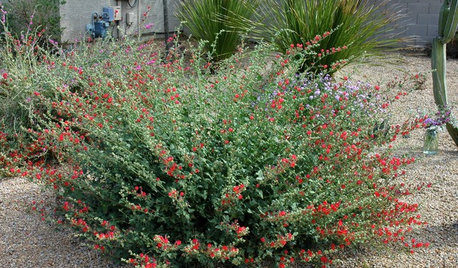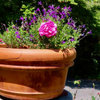Don't forget your nitrogen!
sherryocala
11 years ago
Related Stories

MOST POPULAROrganizing? Don’t Forget the Essential First Step
Simplify the process of getting your home in order by taking it one step at a time. Here’s how to get on the right path
Full Story
CEILINGSIdea of the Week: Don't Forget the Ceiling
Give the Fifth Wall Its Due With a Special Wallpaper or Finish
Full Story0

HOUSEKEEPING20 Things You Might Be Forgetting to Spring-Clean
Clean these often-neglected areas and your house will look and feel better
Full Story
ACCESSORIESWhy You Should Forget About the Usual Coffee Table
Think in smaller multiples for a stylish and functional alternative to that monster table in the middle of the room
Full Story
HOUSEPLANTS8 Houseplants You Can't Kill
They're forgiving and let you forget. Houseplants don't get any easier than this
Full Story
DECORATING GUIDESMeet a Houseplant That Doesn't Mind Neglect
Got better things to do than remember to water your houseplants on schedule? Schefflera will forgive and forget
Full Story
FURNITUREObjects of Desire: Recliners That Don’t Look Like Recliners
Forget bulky, hulky eyesores. These 7 smart and svelte chairs — some without levers — have mastered the art of disguise
Full Story
GARDENING GUIDESSouthwest Gardener's February Checklist
Orange you glad for a citrus-fertilizing reminder? And don't forget the recommended doses of vegetable seeds and cold-hardy flowers
Full Story
GARDENING GUIDES5 Prairie Wildflowers That Can Heal Your Soil
Get free, organic soil fertilizer with nitrogen-pumping plants that draw pollinators too
Full Story
COLOR8 Color Palettes You Can't Get Wrong
Can't decide on a color scheme? Choose one of these foolproof palettes for a room that feels both timeless and fresh
Full Story







seil zone 6b MI
strawchicago z5
Related Discussions
Don't forget to save your tomato seeds.
Q
Don't forget about your generator
Q
Ouch: don't forget the plastic coating on your baffles!
Q
You're invited and don't forget to bring a gift !
Q
jerijen
strawchicago z5
malcolm_manners
sherryocalaOriginal Author
strawchicago z5
malcolm_manners
buford
sherryocalaOriginal Author
floridarosez9 Morgan
sherryocalaOriginal Author
strawchicago z5
strawchicago z5
sherryocalaOriginal Author
strawchicago z5
sherryocalaOriginal Author
buford
strawchicago z5
harborrose_pnw
saldut
strawchicago z5
Kippy
strawchicago z5
Tessiess, SoCal Inland, 9b, 1272' elev
floridarosez9 Morgan
sherryocalaOriginal Author
Kippy
floridarosez9 Morgan
michaelg
sherryocalaOriginal Author